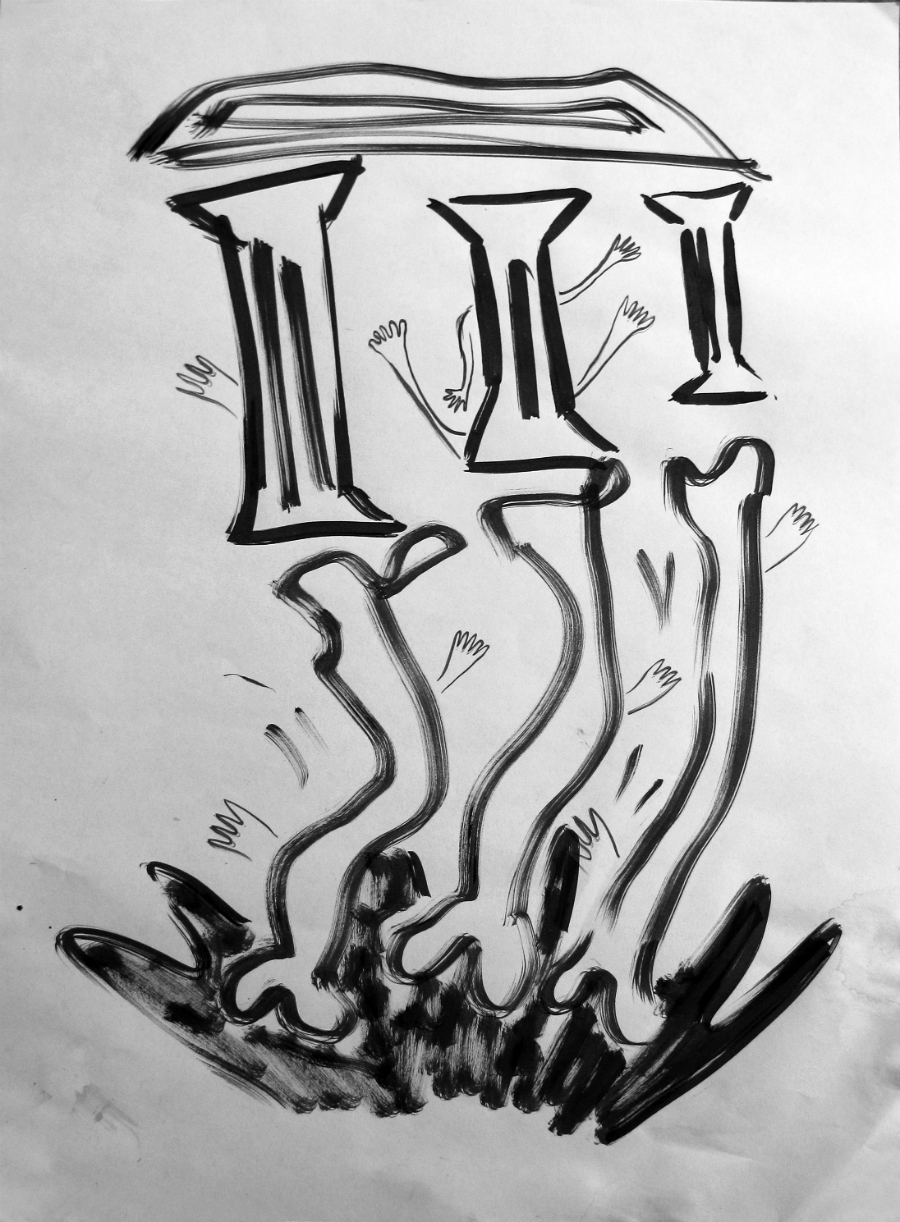A Review From The Future… Liverpool Biennial 2016

Zian Chen travels forwards in time, to July 2016, to bring us a review of this year’s Liverpool Biennial festival…
Relative to visual cultures, literature is a rather more stable intellectual milieu – and yet overly stable foundations are not so appropriate for real time travel.
—The curators of Liverpool Biennial explaining their actualisation of time travel.
The psychological effects of this Biennial – for some viewers, at least – is akin to the disturbing effects of time travel. For others, especially for the organisers and the artists, the acceleration of time appears not to have that shiny, novel allure.
Such a dangerous undertaking has brought about a series of nightmarish side effects, like when artists who rely on dreams for their inspiration have their own dreams disrupted. The many participating artists, who include a “director of behavior”, a sleep-sculptor, and a poet whose lines of verse unintentionally appear in the titles of the works, have all expressed concern about the temporal displacements caused by this exhibition. The Biennial normalizes an inverted, topsy-turvy environment. In spite of the fact that all of its artists believe in subverting the relationship between reality and a limitless imagination, the exhibition ultimately upsets the rhythm and the metabolism of their creative practice. Their impulses are no longer so creative when the backdrop starts to be creative in its own right.
How might one accelerate time by curating an exhibition? In order to enact a physical change in the world through metaphysics, the curators of the Biennial employed the notion of “episode” as a guideline (its role resembles a peculiar sense of temporality, we are told). They used concepts drawn from digital service sectors, incorporating processes such as “co-locating” and “multi-focusing”. (The initial part of the curatorial plot was quite fun, very “dreamy and drifty” – until the day before the opening.)
In the opening exhibition tour, a sleepwalking workshop performed the way that the ten co-curators are in fact the ten identities of a single person. The workshop explained how the ten co-curators can receive ten conflicting messages at once, and how – simultaneously – they can grasp the totality of ten different messages. (From this moment on, I was told, some of the visitors started to lose the totality of their own consciousness.) After that, another curator explained how many works in the exhibition employ a conceptual rotation for the purposes of acceleration. This is like the Biellmann spin – the closer that objects become, the faster they spin. Its success allows many objects to depart from their usual context. (I was summoned back: the air of the exhibition started to fill with strange senses – temporality started to master the viewer’s attention.)
Using “to-be-out-of-context” as a method, the ninth Liverpool Biennial marks a break with previous Biennials, completely discarding geopolitical context-sensitivity. This has sparked debate within curatorial circles. Some suggest, worryingly, that human artists may no longer be able to make art, and that algorithms are better adapted to such contextual antipathy, whilst others claimed that the ninth Biennial marks an important temporal shift in curatorial paradigms.
As I write, a voice analyst, whose work thunders out across various venues, searches for a solid foundation in the sphere of visual cultures from the perspective of legality and aurality. He believes that time travel should not be founded primarily on acceleration, which means for him a consolidation of the establishment: a linear temporality that marries with the Renaissance linear perspective. For him, real time travel should not rely on the visual – that would only be the continuation of a European Enlightenment fantasy. Greater possibilities, found with the realm of the aural and the legal, hold the potential to break through the fictional boundary between past and future.
A tropical astrologer in the exhibition holds a similarly critical attitude. Her works look into the future through star signs, highlighting a logic that cuts across time: the “foretelling” that we talk of usually refers to the way that we grasp a particular logic in the movement of things. When Marx says history repeats itself, the repetition is not the repetition of the fact itself but that of its logic. And grasping this logic is similar to the ability to understand future events in advance, even if when in actual fact this is not the case.
The Biennial’s methodological consensus is this: in order to accelerate time, one must first return the object to the degree zero. To reset, Ian creates a simulator; mathematical formulae generate his animation, drawn from newborns’ spontaneous reactions to objects and phenomena. For him, newborns have never had the experience of anything in the world. In their reactions towards the unknown, one sees none other than the voluntary creativity which lies not on our side of knowledge, but within a temporality beyond what we know or understand.
An unforeseen characteristic of the work is its ability to accidentally observe the psychological effects that the exhibition has on its audience. These effects are strikingly different in children. It turns out that children’s temporal perspective is different from that of adults: “they have no way to experience nostalgia, or what an even newer world there can be beyond a novel world in front of them”. Ian later also taught himself how to understand temporal differences from a child’s perspective. With this toolkit, visitors will also no longer so troubled by the apparently hard-to-digest narrative of the exhibition.
Zian Chen
Twitter: @iamfictitious
Translated from Chinese by Daniel Szehin Ho
Museum as Monster drawing by Sofia Stevi
See Liverpool Biennial in venues across the city 9 July-16 October 2016
Read more on the festival programme, including an app processing the interactions between humans and non-human species developed by artist Ian Cheng, in our preview article: Betty Boop, Ancient Greece & Joy Division: Liverpool Biennial 2016 Travels Through Time





